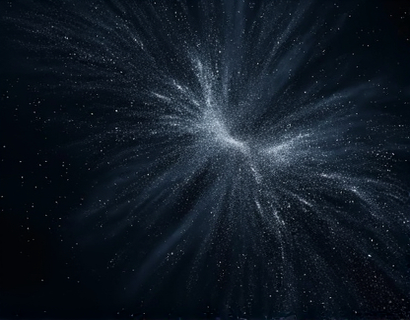Unlocking the Cosmos: A Curious Learner's Guide to In-Depth Cosmic Insights
Embarking on a journey to understand the vast and intricate universe is an endeavor that has captivated human imagination for centuries. This guide aims to serve as a comprehensive resource for curious learners and knowledge seekers, providing a wealth of insightful articles and current insights designed to ignite curiosity and expand knowledge on a multitude of cosmic topics. Whether you are a seasoned astronomer or a beginner with a budding interest in the stars, this resource is tailored to foster a community of passionate learners eager to explore and comprehend the wonders of the universe.
The universe, in its infinite expanse, holds secrets waiting to be unraveled. From the smallest subatomic particles to the largest galaxy clusters, each element contributes to the grand tapestry of cosmic existence. This guide will take you through various facets of cosmic knowledge, starting with the fundamental building blocks of the universe and progressing to the most cutting-edge discoveries in astrophysics and cosmology.
Understanding the Fundamentals
The journey begins with understanding the fundamental components that make up the universe. At the core of everything are elements, the chemical building blocks of all matter. Hydrogen and helium, the lightest and most abundant elements, form the basis of stellar nucleosynthesis, the process by which stars create heavier elements. This process not only shapes the stars but also enriches the interstellar medium, the material between stars, with heavier elements necessary for planet formation and, ultimately, life.
Moving beyond elements, we delve into the structure of atoms and the forces that govern their behavior. The electromagnetic force, one of the four fundamental forces of nature, plays a crucial role in holding atoms together and facilitating the interactions that lead to the complex chemistry of life. Understanding these fundamental forces and particles is essential for grasping the larger cosmic picture.
Stars: The Cosmic Furnaces
Stars are the luminous giants of the universe, serving as natural laboratories for studying extreme physics and chemistry. They are born from clouds of gas and dust, primarily composed of hydrogen, which collapse under their own gravity. As the core temperature and pressure increase, nuclear fusion ignites, converting hydrogen into helium and releasing enormous amounts of energy in the form of light and heat. This process, known as stellar nucleosynthesis, not only powers the star but also contributes to the chemical evolution of the galaxy.
Different types of stars exist, each with its own life cycle and characteristics. Sun-like stars, or G-type main-sequence stars, like our own Sun, spend most of their lives in a stable state, fusing hydrogen into helium in their cores. More massive stars, classified as O, B, A, F, and G types, burn through their fuel more rapidly, leading to shorter but more luminous lives. These massive stars play a crucial role in enriching the universe with heavier elements through supernova explosions, which scatter these elements into the interstellar medium.
Galaxies: Island Universes
Galaxies are vast collections of stars, gas, dust, and dark matter, bound together by gravity. Our own Milky Way is just one of billions of galaxies in the observable universe. Each galaxy has its own unique structure and history, ranging from spiral galaxies with prominent arms where new stars are born, to elliptical galaxies composed mostly of older stars.
Galactic evolution is a complex process influenced by various factors, including mergers with other galaxies, gas accretion, and the activity of supermassive black holes at the galactic centers. These black holes, millions to billions of times more massive than the Sun, play a significant role in regulating star formation and shaping the overall structure of galaxies. Understanding the dynamics and evolution of galaxies provides insights into the large-scale structure of the universe and the processes that govern cosmic evolution.
Cosmic Expansion and the Big Bang
The Big Bang theory is the prevailing cosmological model that explains the origin and evolution of the universe. According to this theory, the universe began as an extremely hot and dense state around 13.8 billion years ago and has been expanding ever since. This expansion is not just a movement through space but an actual increase in the size of space itself, a concept that challenges our intuitive understanding of the universe.
Evidence for the Big Bang comes from multiple lines of observation, including the cosmic microwave background radiation, which is the afterglow of the hot early universe. This radiation, discovered in 1964 by Arno Penzias and Robert Wilson, provides a snapshot of the universe when it was just 380,000 years old. The uniformity and slight anisotropies in this radiation offer crucial clues about the initial conditions and subsequent evolution of the universe.
Observations of distant galaxies also support the idea of cosmic expansion. The redshift of light from these galaxies indicates that they are moving away from us, and the farther away a galaxy is, the faster it recedes. This relationship, known as Hubble's Law, is a cornerstone of modern cosmology and provides a measure of the universe's expansion rate, known as the Hubble constant.
Dark Matter and Dark Energy
Despite the progress in understanding the universe, several mysteries remain. Two of the most profound are dark matter and dark energy, which together make up about 95% of the universe's total mass-energy content. Dark matter, which does not interact with electromagnetic radiation and is thus invisible, is inferred from its gravitational effects on visible matter, such as the rotation curves of galaxies and the distribution of cosmic structures.
Dark energy, on the other hand, is a mysterious form of energy that permeates all of space and is responsible for the accelerated expansion of the universe. Its exact nature remains unknown, but it is often described as a cosmological constant or a form of vacuum energy. The interplay between dark matter and dark energy shapes the large-scale structure of the universe and determines its ultimate fate.
Exoplanets and the Search for Life
The discovery of exoplanets, planets orbiting stars other than the Sun, has revolutionized our understanding of planetary systems and the potential for life beyond Earth. With over 4,000 confirmed exoplanets, we have found a diverse array of worlds, from rocky planets similar to Earth to gas giants and even planets orbiting binary star systems.
The search for habitable exoplanets focuses on finding worlds within the "habitable zone," the region around a star where conditions might allow for liquid water to exist on a planet's surface. Water, essential for life as we know it, is a key factor in this search. Advanced telescopes and space missions, such as the Transiting Exoplanet Survey Satellite (TESS) and the James Webb Space Telescope, are pivotal in identifying and characterizing these distant worlds.
While we have not yet found definitive evidence of extraterrestrial life, the discovery of biosignatures—chemical indicators of life—in the atmospheres of exoplanets is a promising avenue of research. The study of extremophiles on Earth, organisms that thrive in extreme conditions, also provides insights into the potential for life in harsh environments elsewhere in the universe.
Future Prospects and Exploration
The future of cosmic exploration is exciting and filled with possibilities. Advances in technology and international collaboration are paving the way for new discoveries and a deeper understanding of the universe. Upcoming missions, such as the Euclid satellite, aimed at mapping the geometry of dark matter, and the Nancy Grace Roman Space Telescope, designed to study dark energy and exoplanets, will significantly enhance our cosmic insights.
Space travel and colonization are also on the horizon, with private companies and space agencies planning missions to the Moon, Mars, and beyond. These endeavors not only push the boundaries of human exploration but also contribute to scientific knowledge and technological innovation. The establishment of a human presence in space could eventually lead to the creation of a multi-planetary species, ensuring the survival and expansion of life in the cosmos.
As we continue to unravel the mysteries of the universe, it is clear that the journey of cosmic discovery is far from over. Each new discovery opens doors to further questions and inspires the next generation of scientists, engineers, and explorers. By fostering a community of curious learners, we can collectively advance our understanding of the cosmos and our place within it.
Embarking on this journey of cosmic exploration is not just about acquiring knowledge; it is about igniting a sense of wonder and curiosity that drives us to look beyond the horizon and reach for the stars. Whether you are a student, a teacher, or simply someone with a passion for the universe, this guide aims to provide the resources and insights needed to deepen your understanding and contribute to the ongoing quest for cosmic knowledge.










































